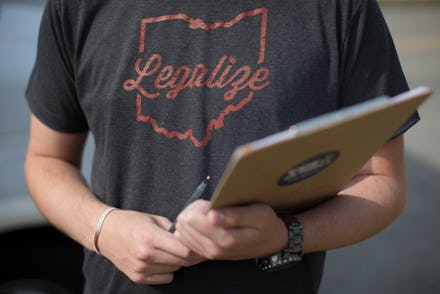Ohio Votes Not to Legalize Marijuana

On Tuesday, Ohio residents voted against legalizing the limited sale and use of marijuana in the state. Tuesday's ballot measure for legalizing marijuana in Ohio included three core issues: redistricting, monopolies and the state's proposed cannabis policy.
The failed marijuana policy would have allowed anyone age 21 and older to apply for a license through the Ohio Marijuana Control Commission. That license would have allowed for the legal possession of and permission to grow up to 8 ounces of cannabis. With or without a license, Ohio residents could have legally purchased, possessed, used, shared and transported no more than 1 ounce of marijuana under the new law.
The new drug policy also proposed to legalize the use of medical marijuana.
Important to the legalization of cannabis and the resulting "green economy" is the issue of taxation. Ohio's drug policy switch up would have introduced a 5% flat tax rate on marijuana sold in retail stores and a flat 15% tax rate on marijuana production facilities, according to Ballotpedia.
Despite the shift in legal status, there would have been a fair amount of restrictions on the cannabis economy in Ohio, including where cannabis can be grown and sold — boundaries that exclude schools, libraries, some public parks and religious sites. The bill would have also limited the production of marijuana to 10 commercial centers, with an opportunity to add one more site in the next four years if cannabis supply can't keep pace with demand.
Before Tuesday's vote, four states and the District of Columbia had legalized the recreational use of marijuana. Ohio would have joined Alaska, Colorado, Oregon and Washington in legalizing cannabis for recreational use.